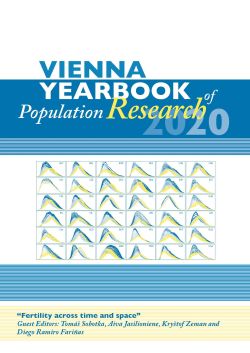
Vienna Yearbook of Population Research 2020, pp. 215-236, 2020/09/10
Fertility across time and space

Several authors have studied the late fertility transition in Sardinia, which did not start until the 1950s. This contribution aims to investigate the association between the decline in marital fertility and the fall in infant and child mortality. We use individual data to undertake classical family reconstruction starting from the mid- 19th century for the population of two Sardinian villages, Villagrande Strisailli and Seulo, which we have previously studied for their remarkable longevity. Our results indicate that in this population, there were very few signs of fertility decline prior to 1920, and fertility decreased only gradually before 1950, but that the decline in fertility accelerated thereafter. We also found that infant and child mortality decreased slightly between the two world wars, and did not decline substantially until after the Second World War. The question arises as to whether these two transitions were associated, and, if they were, which one preceded the other. Our results suggest that there was some degree of synchronisation, with more pronounced changes beginning in the 1950s. We found that this association cannot simply be explained by a causal relationship based on altered demographic behaviour. Substantial socio-economic changes that began between the two world wars and developed fully in the 1950s might have caused both fertility and mortality declines within a traditional society that was undergoing a transition to adapt to the modern world.
Keywords: marital fertility; infant mortality; child mortality; demographic transition; family reconstruction; Sardinia; longevity blue zone